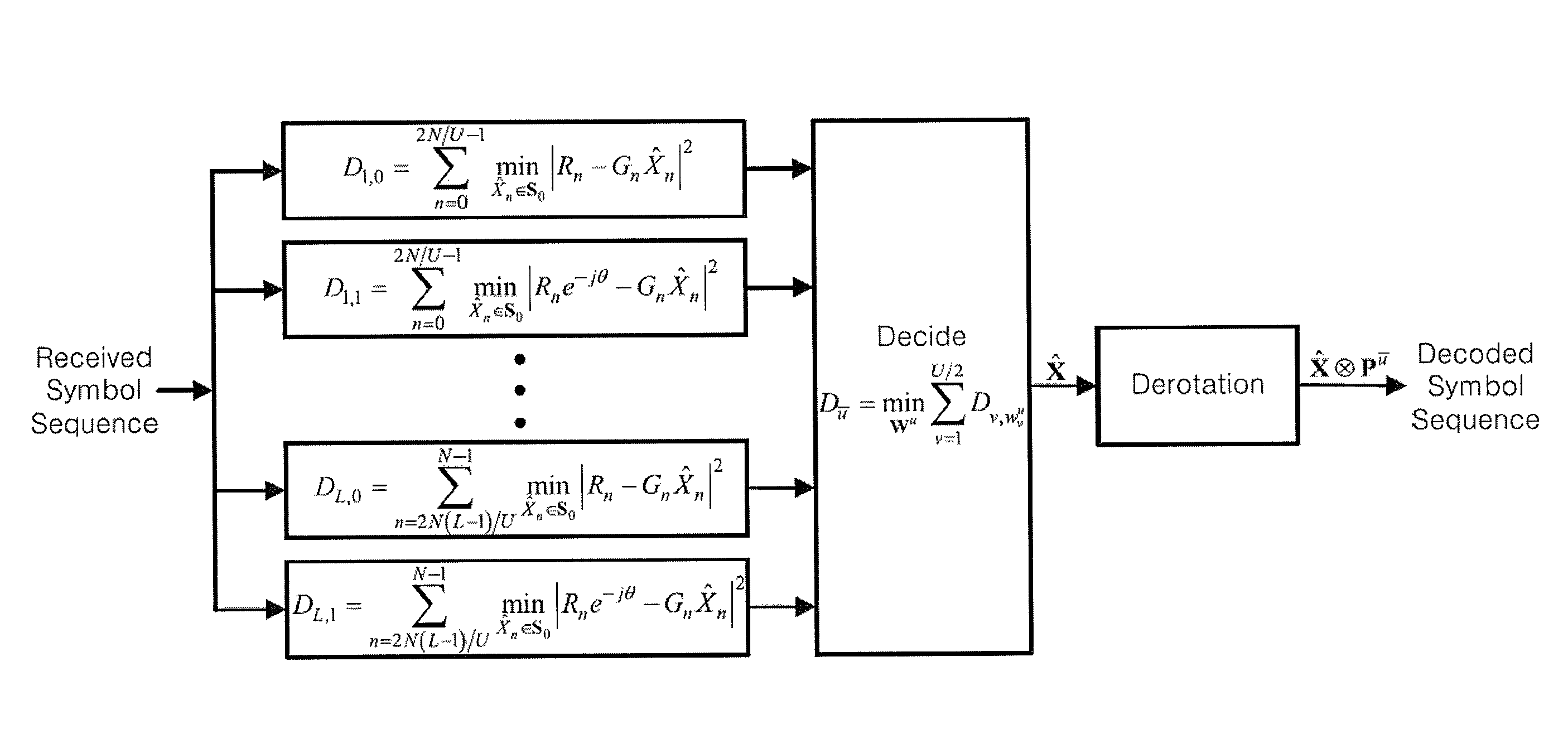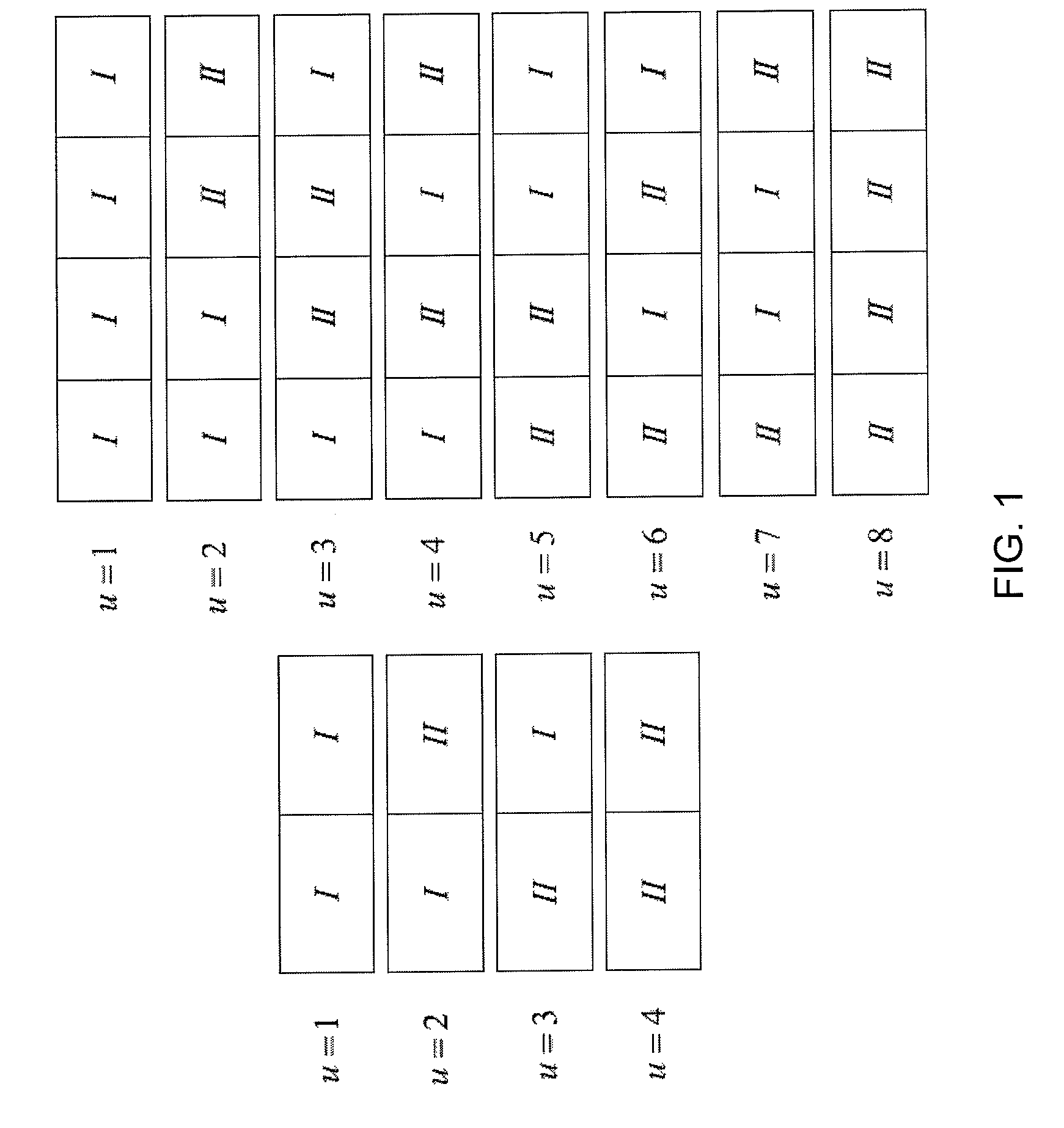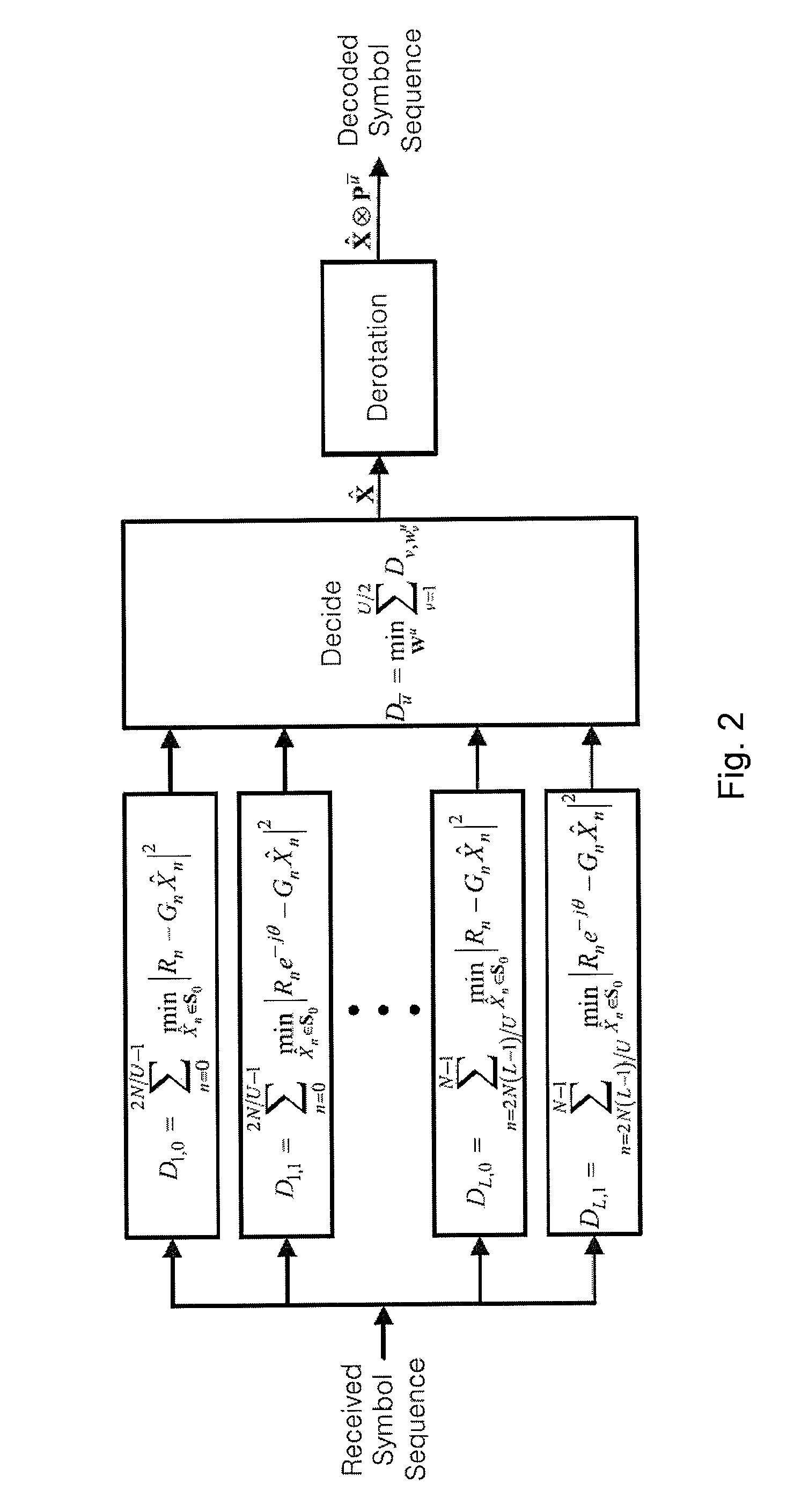Blind SLM and PTS method with low decoding complexity of OFDM signals
a decoding complexity and signal technology, applied in multi-frequency code systems, polarisation/directional diversity, amplitude demodulation, etc., can solve the problems of low decoding efficiency, low peak to average power ratio (papr) of the output signal of the transmitter, and significant inter-modulation and undesired out-of-band radiation of ofdm signals, so as to reduce the peak to average power ratio (papr) and reduce the decoding
- Summary
- Abstract
- Description
- Claims
- Application Information
AI Technical Summary
Benefits of technology
Problems solved by technology
Method used
Image
Examples
embodiment 1
[0057]A novel BSLM scheme using bi-orthogonal vectors according to an embodiment of the invention will be described.
[0058]Instead of randomly selecting each element φnu of a conventional phase sequence, the BSLM scheme according to this embodiment uses an m-sequence and its cyclic shifts with zero padding as phase sequences, Pu=[P0u, P1u, . . . , PN-1u], where Piuε{+1, −1}, 0≦i≦N−1, and uε{1, 2, . . . , U}. In fact, Pu corresponds to rows of a cyclic Hadamard matrix constructed from m-sequences. It is known that m-sequences satisfy the optimal condition for the phase sequence in the SLM schemes.
[0059]In order to embed side information of the phase sequences into alternative symbol sequences without loss of data rate, block partitioning and predetermined phase rotation are used in the BSLM scheme according to this embodiment as follows. Assume that U phase sequences are used. The u-th alternative symbol sequence X{circle around (×)}Pu is divided into L sub-blocks as [X1u, X2u, . . . ...
embodiment 2
[0083]The novel BSLM scheme according to this embodiment may be extended to a partial transmit sequence (PTS). This will be described below in more detail.
[0084]An input symbol sequence X in the PTS scheme is partitioned into V disjointed symbol subsequences, Xv=[Xv,0, Xv,1, . . . , Xv,N-1], v=1, 2, . . . , V satisfying Expression 13:
[0085]X=∑v=1VXv
[0086]Each symbol in the input symbol sequence X belongs to only one symbol subsequence Xv called a sub-block. Due to disjoint Xv′s, for each given k, 0≦k≦N−1, Xv,k=0 except for subcarriers carrying the data. Then, each subsequence is multiplied by a rotating factor bv with |bv|=1 as
[0087]X′=∑v=1VbvXv[Expression14]
[0088]The rotating factor bv is chosen from a given set which is usually ={+1, −1}. Using the linearity of the IFFT, the OFDM signal sequence in the time domain is given as Expression 15:
[0089]x′=IFFT{∑v=1VbvXv}=∑v=1VbvIFFT{Xv}=∑v=1VbvXv.
[0090]An optimized vector of rotating factors {tilde over (b)}=[{tilde over (b...
PUM
 Login to View More
Login to View More Abstract
Description
Claims
Application Information
 Login to View More
Login to View More - R&D
- Intellectual Property
- Life Sciences
- Materials
- Tech Scout
- Unparalleled Data Quality
- Higher Quality Content
- 60% Fewer Hallucinations
Browse by: Latest US Patents, China's latest patents, Technical Efficacy Thesaurus, Application Domain, Technology Topic, Popular Technical Reports.
© 2025 PatSnap. All rights reserved.Legal|Privacy policy|Modern Slavery Act Transparency Statement|Sitemap|About US| Contact US: help@patsnap.com



